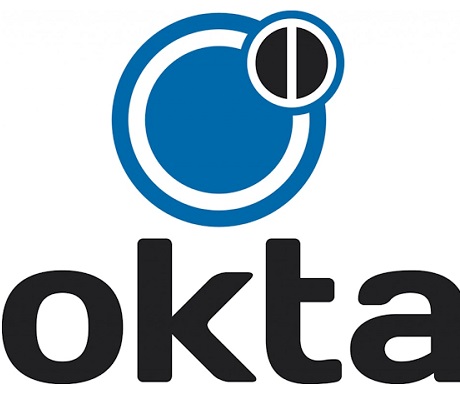Okta Inc-A(OKTA.US)2026财年第一季度业绩电话会
文章语言:
简
繁
EN
Share
Minutes
原文
会议摘要
In Q1 of FY 26, Ota reported strong financial results attributed to strategic specialization in its go-to-market approach, particularly benefiting the US public sector vertical. New product contributions, including Octa Governance and Auth0 for GenAI, showed substantial growth, with a focus on securing AI agents and non-human identities. The company anticipates total revenue growth of 10% for Q2 and 9-10% for FY 26, driven by enhanced security solutions and operational efficiencies.
会议速览
The webcast discusses Octa's financial outlook, market positioning, and includes forward-looking statements. Key executives present, highlighting non-GAAP financial measures and providing a reconciliation to GAAP. The meeting emphasizes the company's performance and strategic direction for fiscal 2026.
The company experienced a robust start to FY 26, marked by significant growth in large customer segments, strong cash flow, and record profitability. Notable advancements include the strong contribution of new products like Octa Governance, Privilege Access, and Device Access, alongside innovations in protecting non-human identities and securing AI agents. The recent Showcase event highlighted these advancements, emphasizing the company's commitment to addressing evolving cyber threats through integrated identity security solutions.
Octa reports solid Q1 results with record operating profitability and cash flow, highlighting the success of its Go to Market team realignment and specializing sales forces. The company emphasizes its commitment to leading the fight against identity-based cyber attacks and showcases the effectiveness of its threat intelligence team. Octa remains confident in its long-term profitable growth, driven by its comprehensive identity security platform and strategic investments in the US public sector, despite potential near-term uncertainties.
The company has introduced additional conservatism into its Q1 guidance due to specialized go-to-market strategies and macroeconomic considerations, despite a strong quarter and optimistic future outlook.
Despite industry chatter about a challenging April, the company reported a strong Q1 with no observed softness, contradicting peers' experiences, indicating a solid start to the year.
The company has made a solid start in Q1 with a focus on go-to-market specialization for the O0 platform and Octa platform, leading to a strong performance and pipeline build. Key learnings include the effectiveness of specialization, the success in public sector and commercial businesses, and the importance of enablement and focus on individual platforms and buyers.
The company anticipates headwinds in seed expansion and renewal through the first half of FY26, with potential impacts from macroeconomic shifts. NRR trends are expected to remain within a certain range, but negative macro changes could affect this forecast.
Despite historical growth in CRP during worse macro conditions, guidance suggests a second consecutive quarterly decline, attributed to current RPO trends and slower growth rates.
The company introduced suite-based pricing for its OTA platform in Q1 2025, offering good, better, best configurations to encourage cross-selling and consolidation around identity management. Positive results were seen, with customers appreciating the broad array of products and the strategic benefits of consolidating with an independent, neutral provider. The largest deal in Q1 was for a workforce suite, highlighting the success of the new pricing model.
The discussion highlights the excitement around the development of AI capabilities and new internet communication protocols, particularly focusing on the integration of OAuth for authentication in the emerging AI-driven internet. The speaker emphasizes the early stage of these developments, the industry's enthusiasm, and the commitment to playing a significant role in shaping this new layer of software.
The discussed pricing model for Gen AI is usage-based, similar to the current Off Zero model. Future enhancements, such as integrating product capability into authentication handshakes for MCP servers, will have their pricing determined later in the year.
The discussion highlights the positive effects of increased specialization among reps on productivity and the growth algorithm, emphasizing improved focus on specific products and benefits for customers through more tailored service. Changes made in Q1 are seen as setting the stage for future success, regardless of the macroeconomic environment.
The company emphasizes the importance of focusing on platform capabilities, seller expertise, and technical account management to enhance product innovation and customer value. Recent developments include identity threat protection, identity security posture management, and the introduction of AuthorGen AI, aimed at accelerating team enablement and improving customer experience.
The company is experiencing positive trends in representative tenure and repetitions, indicating healthy growth. There's significant optimism regarding new logo pipeline, particularly in the workforce business, driven by a robust platform sell strategy. New products like governance, privilege access, and identity security posture management are generating substantial interest, offering both upsell opportunities and avenues to acquire new customers. The company boasts unmatched product offerings, including independent neutrality, a scalable cloud-based architecture, and a broad range of integrated identity security solutions, positioning it strongly in the market.
Despite Q1 growth exceeding expectations at 12%, the company forecasts 9% to 10% revenue growth, suggesting a potential slowdown to around 8% by Q4. Upside potential for the remainder of the year could be driven by specific products or factors yet to be detailed.
The speaker highlights the significant opportunity in large enterprise markets, emphasizing growth in million-dollar customers and the potential within the global 2000. They discuss the catalysts for change, including cloud migration, security focus, and the AI revolution, urging adoption of an independent neutral identity fabric. The improved product suite, maturity, scalability, and security, along with proven success with major organizations across various sectors, underscore the momentum and potential for further expansion.
The company is focusing on executing well in Q2, Q3, and Q4 before discussing FY 27. Incremental conservatism is being applied across the business, including new logos and NRR, with particular prudence around the federal vertical due to one-year contract mandates.
Despite a prudent macroeconomic outlook, the company maintains its investment levels, citing strong Q1 performance and promising Q2 pipelines, emphasizing specialization to enhance execution.
Despite experiencing a record quarter, the company sees a lower sequential increase in subscription revenue, attributed to factors including a shorter quarter length and changes in guidance philosophy reducing conservatism in financial projections.
Despite increasing macroeconomic concerns and cautious customer sentiments, the company experienced consistent performance in pipeline and sales throughout March and April, with no significant changes observed in May. The company acknowledges the potential for an echo chamber effect among businesses and maintains a prudent yet aggressively investing approach, noting that the quarter's performance is typically back-end loaded, with clearer indicators in June and July.
The customer identity sector, particularly A0, experienced a successful Q1 driven by large deals, with optimism for broad-based success throughout the year amid growing interest in gen AI space.
As AI adoption moves from pilots to production, particularly among leading-edge enterprises, the challenge of securing non-human identities becomes more pronounced. Identity security solutions are highlighted as crucial for managing the increased risks associated with agentic workflows and systems, emphasizing the need for robust access management and privilege solutions.
The company experienced a strong quarter with improved new business, upsell, and cross-sell activities, particularly noting success in new product bookings and execution by the team.
Discussion focuses on the decline of CRP in Q2, with expectations for growth in Q3 and Q4, addressing concerns over persistent declines in new bookings and emphasizing the coverage ratio metric.
The discussion highlights the tight correlation between subscription revenue growth and CRP growth, emphasizing a shift towards examining coverage ratios for accurate financial forecasting instead of relying solely on percentage growth.
The company discusses the four consecutive quarters of NRR decline, attributing it to headwinds from upselling older customer cohorts and potential macroeconomic deterioration. They anticipate stabilization soon but warn of possible impacts from significant macroeconomic changes.
The discussion highlights a growing preference for purchasing customer identity solutions over building in-house, driven by advancements in AI and the emergence of agent-based applications. The trend towards 'buy versus build' is attributed to the improved quality, reliability, and scalability of available solutions, making them increasingly attractive to businesses as they navigate the evolving digital landscape.
The speaker discusses Okta's current lead in the non-human identity market due to its comprehensive solution and trusted brand. They emphasize the need for continuous innovation and execution to maintain this position against competitors like CyberArk and SailPoint, especially as the market for agents working on behalf of entities grows.
The discussion highlights the prudence in adjusting strategies for the US public sector amidst uncertainty and tariffs, emphasizing the focus on efficiency and justifiable investments. Successes in the public sector, including significant deals and strategic partnerships, are noted, with optimism for continued growth despite challenges.
要点回答
Q:What are the key financial highlights for the first quarter of fiscal 2026?
A:The key financial highlights for the first quarter of fiscal 2026 include continued strength with large customers, zero new product contribution, strong cash flow, and record profitability.
Q:What new capabilities have been delivered in OIG that are helping with customer wins?
A:The new capabilities delivered in OIG include separation of duties and on-premises connector, which have helped with great customer wins, such as the Global 2000 insurance company mentioned in the company's posted commentary.
Q:What key themes were highlighted at the recent Showcase event?
A:The key themes at the recent Showcase event were how Octa is protecting non-human identities (NHI) and how zero trust helps developers build secure AI agents.
Q:What is the purpose of the OTA Secure Identity Commitment?
A:The purpose of the OTA Secure Identity Commitment is to lead the fight against identity-based cyber attacks, and to highlight the great security work done by OS Threat Intelligence team by making their insights more actionable for thousands of customers across various industries.
Q:What is the expected growth and financial outlook for the second quarter and full fiscal year 2026?
A:The expected growth and financial outlook for the second quarter of fiscal year 2026 include total revenue growth of 10%, current RPO growth of 10% to 11%, non-GAAP operating margin of 26%, and a free cash flow margin of approximately 19%. For the full fiscal year 2026, the outlook includes total revenue growth of 9% to 10%, non-GAAP operating margin of 25%, and a free cash flow margin of approximately 27%.
Q:What is the company's progress and focus for the year?
A:The company is very happy with its performance in Q1 and is on track for the year, having made significant progress. The focus is on continuing the positive momentum and working with customers on AI projects, moving from POCs to production, and building AI applications.
Q:What were the thoughts on the macro impact in Q1 and future guidance?
A:The company did not see any impact from the macro in Q1 relative to prior quarters. The guidance for the future is based on incremental changes felt in the environment, with a change in tone and some uncertainty. However, the new guidance is not an return to the old model but still has less conservatism, and the go-to-market specialization factor remains consistent with the beginning of Q1.
Q:What is the current state of go-to-market specialization and what lessons have been learned?
A:The company has had a solid start in the go-to-market specialization for Q1, with some changes leading to increased specialization for sellers. This resulted in strong performance, solid pipeline build, and continued strength in new product introductions. Lessons learned include the effectiveness of specialization, as evidenced by past successes, and the need for time to implement these changes.
Q:What assumptions are made in the guidance regarding renewal headwinds and new business recovery?
A:The guidance accounts for renewal headwinds and assumes that NRR will trend within a certain range. While the macro turning negative could impact NRR, there is no specific number in the guidance due to uncertainty. However, the guidance does embed the potential for negative macro conditions affecting new business recovery.
Q:Why does the guidance suggest a sequential decline in CRP for Q2?
A:The guidance suggests a sequential decline in CRP for Q2, despite an improving macro environment, due to the company growing at a faster clip historically compared to the current guidance period. Sequential growth in CRP has not happened for two consecutive quarters before, but the current guidance reflects a potential decline. Factors like pull-forwards in Q4 and differences in growth rates between the past and present should be considered when modeling CRPO.
Q:What is the significance of current RPO in relation to subscription revenue?
A:Current RPO (Revenue Per Opportunity) is highly correlated with subscription revenue and the total value, which means it is crucial to understand its impact on modeling current RPO.
Q:What new pricing model was introduced in Q1 and what was its effect?
A:A new suite-based pricing model was introduced in Q1 for the OTA platform, and it led to positive results as people opted to buy multiple products in good, better, best configurations.
Q:What benefits does the new pricing model provide to customers?
A:The new pricing model allows customers to consolidate their identity management solutions while still having choice and not being locked into a particular ecosystem or cloud environment, providing them with cost savings and multiple capabilities from one vendor.
Q:How might OAuth for MCP be leveraged in the market?
A:The development of OAuth for MCP is anticipated to be leveraged to support AI capabilities and facilitate communication with AI agents and AIC workflows.
Q:What are the early indications on pricing for the new AI capability?
A:The pricing model for the new AI capability is usage-based, similar to existing products like Okta. The specific pricing for extended authentication capabilities via an MCP server will be discussed later in the year.
Q:What impact has further specialization in the field had on the company's performance?
A:Further specialization in the field has led to a more focused approach by reps, with more specializing than in the previous year's Q1, and resulted in performance metrics that are as good or better than the previous quarter, indicating a positive impact on productivity and NRR.
Q:Why is specialization in the field important for upsell and cross sell?
A:Specialization is important for upsell and cross sell because it enables reps to become more proficient in selling specific products, leading to better results in the long run. It sets the company up to execute well in any macroeconomic conditions and is part of a broader strategy to enhance customer experience and value.
Q:What are the positive trends mentioned that indicate company performance?
A:The positive trends mentioned are Focus Works, successful new business quarters with the majority of the top 10 deals in Q1, and the trend in rep tenure and repetitions, which is considered a health indicator.
Q:How does the company view its competitive position in the workforce business, especially with the introduction of new products?
A:The company feels very optimistic and positive about its competitive position in the workforce business due to the new product offerings, especially the platform sell strategy. They are confident about new logo acquisition and the differentiation of their platform due to the breadth of products and integrations.
Q:What factors contributed to the company's positive outlook for the remainder of the year?
A:The positive outlook for the remainder of the year is driven by large enterprise growth, with a 20% increase in customers over a million dollars and the potential to grow within the global 2000 and top 5000 companies. The company's offerings, including a comprehensive identity security fabric and extensive product range, are viewed as advantageous in a market undergoing cloud migration and the AI revolution.
Q:Why is the guidance for fiscal year 2027 not discussed yet and what is the rationale behind not drawing conclusions from Q1 growth?
A:The company has not discussed guidance for fiscal year 2027 because they prefer to evaluate performance over several more quarters, emphasizing that Q1 is the smallest quarter of the year and they do not want to draw too many conclusions from it. They plan to focus on execution in Q2, Q3, and Q4 before discussing the size of the forecast for 2027.
Q:What is the incremental conservatism being applied by the company, and how is it distributed across the business?
A:The incremental conservatism being applied by the company is tied to overall macroeconomic conditions and is reflected across the business. It's mentioned that the federal vertical is particularly conservative due to annual contract renewal dynamics, and there is also general prudence across the board.
Q:Why is the increase in subscription revenue not more robust despite a 'blowout' quarter?
A:The increase in subscription revenue is not more robust because of the high growth rates each year, which mask the difference between the number of days in the quarter, and because of the company's guidance philosophy which has less conservatism now compared to the past.
Q:What is the perceived impact of other companies' negative outlooks on the speaker's company, and how are they addressing this?
A:The speaker's company is cautious and considers the potential echo chamber effect of other companies' negative outlooks, yet they are not overly concerned due to consistent pipeline and performance numbers. Despite hearing about the business being soft in March and April, the company is focusing on positive performance and continues to invest and execute aggressively.
Q:How are the initial months of the quarter typically indicative of overall performance, and what is the plan for assessing the quarter's success?
A:The speaker notes that the initial months of the quarter, specifically the first month, are generally not very indicative of overall performance. Assessing the full quarter's success will require data from June and July, and the company plans to provide an update on the next earnings call.
Q:What was the performance of the customer identity side of the business and the A0 deal in the first quarter?
A:The customer identity business performed well, with A0 experiencing a strong Q1 and being one of the most successful customer segments. The A0 deal was a significant achievement, especially since the prior quarter had a strong showing as well, indicating the success and growth potential of the A0 strategy.
Q:What is the focus of the company regarding AI and how is it relevant to their current and future business strategies?
A:The company is focusing on AI and specifically on 'a' zero, which is a significant initiative. They are optimistic about the future success being broad-based and are excited about the potential of AI to address existing problems with non-human identities. The company's identity security posture management and privilege solution are becoming more relevant as AI adoption grows, especially during proof of concept and pilot phases before moving into production.
Q:How does the company define its contribution mix between new products, cross-sales, and upsales, and how does it align with their plans?
A:The company's contribution mix for the quarter included a good balance of new business, upsell, and cross-sell. NPIs had a nice quarter with new business and upsell/cross-sell, and the company is on track for a nice quarter overall. However, the pipeline remains more tilted towards upsell than new products historically. The team's execution was very good, meeting the marks for the quarter.
Q:What is the relationship between the coverage ratio and churn, and how do these metrics affect the company's financial outlook?
A:The coverage ratio is related to churn and is a key metric for the company. Despite a decrease in the coverage ratio this quarter and guidance for a similar decrease next quarter, the speaker believes Q2 may be the bottom if one assumes typical seasonality. An update on the coverage ratio will be provided after Q2 and Q3. The relationship between coverage ratio and churn is crucial for understanding the company's financial health and growth trajectory.
Q:Why might subscription revenue growth not align with the growth in covered points (CRP)?
A:The speaker suggests that it is unwise to focus solely on percentage growth and instead to look at the actual dollar values forecasted. The mechanics of the financials are driven by dollar amounts, and therefore, examining the dollar forecast is recommended. This approach helps in understanding the true growth and performance of the company's subscription revenue in relation to CRP.
Q:Why did the NRR decline for the fourth consecutive quarter?
A:The NRR declined for the fourth consecutive quarter due to headwinds related to renewal of older customer cohorts facing upsell challenges with new products.
Q:What does the company expect regarding market fluctuations and their impact on NRR?
A:The company expects to fluctuate within a certain range and acknowledges that if the macro conditions significantly deteriorate, it will have a headwind on NRR, impacting new business as well.
Q:How does the company view the future of customer identity solutions in the context of the 'agency revolution'?
A:The company views the future of customer identity solutions as increasingly leaning towards buying solutions instead of building, a trend which is supported by advancements in developer experiences and the rising popularity of AI and agent-based apps.
Q:What is the company's strategy for maintaining its lead in the non-human identity market?
A:The company's strategy for maintaining its lead in the non-human identity market includes executing well, continuing to innovate, and keeping a trusted brand that allows the right to play in the market.
Q:How is the outlook for the US public sector and does it look more material than prudent adjustments?
A:The outlook for the US public sector is cautious, with prudent adjustments being made. There is a concern about the impact of tariffs and economic uncertainty on federal agencies, but there are also opportunities for cost-saving and efficiency improvements with Oct's solutions, which are perceived as more capable and cheaper to run.

Okta Inc
Follow





